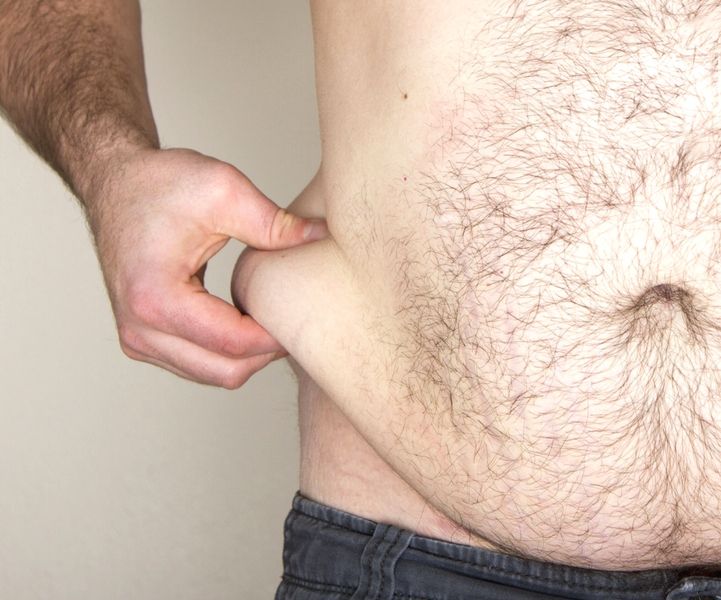How Krill Oil Can Help You Combat Obesity
9 minute read
According to the Center for Disease Control, over one in three Americans is classified as obese. Obesity is commonly measured by nutritionists through two different markers, BMI or body mass index and waist circumference.
BMI
Body mass index is determined by dividing weight in kilograms by height in meters, squared.
A body mass index of 30 or greater is considered obese; morbid obesity is determined by having a BMI of 40, being 100 pounds or more overweight, or having a BMI of 35 but with obesity-associated conditions such as hypertension or Type 2 diabetes.
Waist Circumference
A second measure of obesity is waist circumference, which is less commonly used as an indicator. For women, a waist size of 35 or greater is considered to be unhealthy; for men, that measure is 40 inches or greater.
| Related: 14 Therapeutic Whole Foods To Kick Start Your Health |
Carrying excess weight in the abdominal area (as defined by waist circumference) increases risk for premature cardiovascular disease and death than those with smaller waist sizes or who carry excess fat in hips and thighs. Abdominal obesity is strongly linked to risk for type 2 diabetes, cardiovascular disease, and death, even when controlled for BMI.
The Nurses Health Study
In one of the longest series of studies to look at abdominal obesity, researchers investigated risk factors for chronic diseases in women by surveying nurses for their behaviors and lifestyle. Researchers looked at the relationship between waist circumference and mortality from cardiovascular disease, cancer, or other causes.
At the end of 16 years, women with waist sizes of 35 inches or greater were found to have almost double the risk of dying from heart disease compared to women with smaller waist sizes. Similar risks were found for cancer deaths.

Health Risks of Obesity
According to Harvard’s Elbert T.H. Chan School of Public Health, obesity is the second greatest cause of death after tobacco for people under 70, associated with numerous dangerous health conditions.
♦ Heart disease & stroke
♦ Type 2 diabetes
♦ Hypertension
♦ High cholesterol
♦ 11 types of cancer, including leukemia, breast, and colon cancer
♦ Asthma
♦ Sleep apnea
♦ Gallstones & kidney stones
♦ Infertility
♦ Osteoarthritis
♦ GERD

Causes of Obesity
At the most basic level, obesity is related to taking in more calories than used for energy, which leads to fat storage. Scientifically, obesity is more complex, involving the impairment in the regulation of various organ systems and molecular pathways, including adipose tissue (fat), the gastrointestinal tract, pancreas, and the central nervous system.
Omega-3 & Omega-6 Ratio
As the incidence of obesity rises, researchers are investigating a link between the ratio of omega-3 and omega-6 fatty acids in relationship to obesity. Both omega-3 and omega 6 fatty acids are essential to the body. However, the typical diet in industrialized countries includes much greater amounts of omega-6 fatty acids compared to omega-3, a rise that has paralleled the increase in obesity.
Omega-6s are present in corn, either by way of animal feed, which is present in meat or dairy, or in vegetable oils. Omega-3s, which include DHA and EPA, are found in fatty fish, fish oil, and krill oil.
Role of Omega-3 in Obesity Regulation
What do omega-3 fatty acids have to do with obesity? Omega-3 fatty acids have an anti-inflammatory effect, modulate lipids or fats, and also influence the central nervous system, all contributors to obesity.
Research shows that omega-3s and specifically, DHA and EPA in omega-3s, may be effective in preventing and treating obesity. One way in which omega-3s impact the central nervous system is through the endocannabinoid and mesocorticolimbic pathways, parts of the central nervous system that relate to the reward system of food, appetite, and food intake.

Appetite and Obesity
As you may imagine, appetite is a key component of obesity control. In contrast to hunger, which is a physical need for food, appetite is a desire for food, hunger notwithstanding. Hunger is the growling in your stomach that lets you know it’s lunchtime. Appetite is what drives you to order that delicious-looking slice of chocolate cake on the dessert tray after you’re already full from dinner.
| Related: The Pleasure Principle: Why We Love Sugar, Salt, and Fat |
Appetite involves several components of the body, one of which is the hormone leptin. This hormone increases with body mass. That is, the more body fat you have, the more leptin, and with obesity comes decreased response to leptin or what is known as leptin resistance.
Another regulator of appetite and metabolism is the endocannabinoid pathway. Endocannabinoid levels are regulated by dietary intake of omega fatty acids, in particular the imbalanced ratio of omega-3 and omega-6.
Krill Oil and Obesity Control
Krill oil, which is extracted from the small crustacean krill, is a good source of both DHA and EPA. A study of mice with low levels of omega-3 fatty acids demonstrated significantly higher brain levels of endocannabinoids compared to those with sufficient levels of omega-3s.
In another study, rats given krill oil had significantly higher levels of both DHA and EPA in the brain, as well as lower levels of 2-AG in the brains. 2-AG is an endocannabinoid that has been associated in animal studies to be associated with overeating. Supplementing with omega-3 fatty acids such as in krill oil may impact food intake, and thus, obesity, by decreasing brain 2-AG.

Omega-3s and Waist Circumference
Increased waist circumference is associated with numerous health risks. A two month study of omega-3 supplementation in overweight or obese postmenopausal women with diabetes led to a reduction in BMI, as well as waist circumference. In an 8-week study of overweight adults on a calorie-restricted diet, participants reported feeling satisfied and less hungry two hours after a meal.
Researchers conclude that EPA and DHA impact the mesocorticolimbic and endocannabinoid pathways by reducing appetite and food intake, which ultimately lead to reduced obesity.
Astaxanthin and Obesity
Unlike fish oil, krill oil is a good source of astaxanthin, a carotenoid antioxidant. When obese mice on a high-fat diet were supplemented with astaxanthin, researchers found that astaxanthin inhibited adipose tissue and weight gain in the mice. In addition, the mice had decreased liver fat, triglycerides, and cholesterol.
An additional study confirmed the impact of astaxanthin on the obesity-related markers, as well as improved insulin sensitivity, and less inflammation.
Astaxanthin has also been shown to reduce oxidative stress in obese or overweight individuals. Obesity is related to chronic low-grade inflammation, along with oxidative stress, which causes cellular damage that leads to the development of numerous obesity-related complications, including metabolic syndrome, type 2 diabetes, cardiovascular and liver disease, and cancer, as well as reduced life expectancy.

The Bottom Line
Over one in three Americans can be classified as obese or morbidly obese, which increases risk for numerous health conditions, including metabolic syndrome, diabetes, cardiovascular disease, and 11 types of cancer. Excess abdominal weight triples the risks for many of these conditions.
Supplementing diet with krill oil has been shown to be effective at reducing or preventing obesity. Krill oil is a good source of both EPA and DHA. Insufficient levels of these omega-3 fatty acids, as well as an imbalance of omega-6 and omega-3 fatty acids are common in obesity.
In addition, krill oil, unlike fish oil, contains astaxanthin, an antioxidant that is associated with reduced fatty tissue and weight gain, improved cholesterol and insulin sensitivity, and reduced oxidative stress, all of which can lead to the development of obesity-related diseases and conditions.












